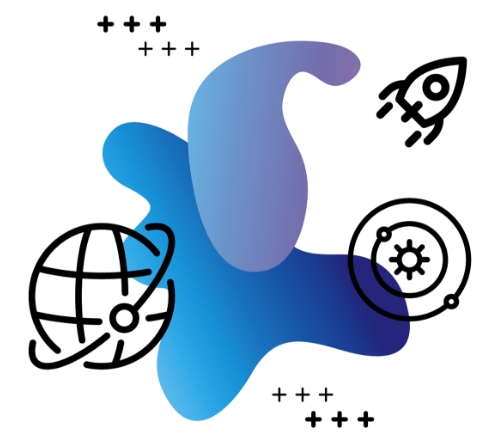the dual impact of insomnia means the effects don’t end when the
sun comes up–symptoms span both night & day. It’s time to prioritize both night & day, so you can help address
the entirety of the condition and maximize patient outcomes
73%
of people with insomnia symptoms reported a nighttime impairment2
data from a US general population study (N=1,003). Impairment defined as mild to very severe difficulty with sleep onset per item 1 of the Insomnia Severity Index (ISI).
a US general population cross-sectional study of 1,003 people aged 22-60 years; data include people with no clinically significant insomnia and people with mild to very severe symptoms per the ISI assessed using the Sleep, Health, Activity, Diet and Environment and Social Factors (SHADES) Survey.
based on the DSM-5, patients diagnosed with insomnia experience both nighttime & daytime impairments1
-
38%
reported difficulty initiating sleep at bedtime3
-
61%
reported frequent or prolonged awakenings throughout the night3
-
52%
reported awakening early in the morning with an inability to return to sleep3
data from a cross-sectional telephone survey of 6,791 people with insomnia assessed using the Brief Insomnia Questionnaire (BIQ). Patients met either DSM-IV-TR (primary insomnia), ICD-10 (non-organic insomnia), and/or RDC-ICSD-2 (insomnia disorder) criteria.
84%
of people with insomnia symptoms reported daytime impairment2
data from a US general population study (N=1,003).
a US general population cross-sectional study of 1,003 people aged 22-60 years; data include people with no clinically significant insomnia and people with mild to very severe symptoms per the ISI assessed using the Sleep, Health, Activity, Diet and Environment and Social Factors (SHADES) Survey.
based on the DSM-5, patients diagnosed with insomnia experience both nighttime & daytime impairments2
-
84%
reported fatigue4
-
71%
reported low energy4
-
91%
reported interference with ability to function4
data from exploratory chart review from clinicians’ evaluation summaries, a self-report screening instrument, the Pittsburgh Sleep Quality Index, the Beck Depression Inventory, the Epworth Sleepiness Scale, and the Hopkins Symptom Checklist—90 in 94 patients with chronic insomnia. Values are obtained from the self-reported sleep questionnaire in the primary insomnia subgroup (n=45). Patients met DSM-IV criteria for primary insomnia.
this night & day
impact is felt by
many people
this night & day impact is felt
by many people
insomnia can occur in
people with or without
comorbidities1
insomnia can occur in people with or without comorbidities1
in the US, insomnia affects6†:
insomnia spans ethnic & racial backgrounds7
*Estimates based on analysis of US community samples (N=2,861).
†Age-adjusted prevalence of self-reported insomnia among US general population aged 18 years and older (N=34,509).
‡Study of US general population aged 25-60 years (N=1,007).
*Estimates based on analysis of US community samples (N=2,861).
†Age-adjusted prevalence of self-reported insomnia among US general population aged 18 years and older (N=34,509).
‡Study of US general population aged 25-60 years (N=1,007).
the night & day
impact of
insomnia survey
the night & day impact of insomnia survey
to understand the hidden toll of insomnia, The Alliance for Sleep and Idorsia Pharmaceuticals conducted one of the largest US surveys among 300 primary care physicians (PCPs), 152 psychiatrists, and 1,001 US adults ages 18+ who have been diagnosed with insomnia by a healthcare provider or who have experienced difficulties sleeping for a period of time (ie, patient with sleep difficulties), of which8:
to understand the hidden toll of insomnia, The Alliance for Sleep and Idorsia Pharmaceuticals conducted one of the largest US surveys among 300 primary care physicians (PCPs), 152 psychiatrists, and 1,001 US adults ages 18+ who have been diagnosed with insomnia by a healthcare provider or who have experienced difficulties sleeping for a period of time (ie, patient with sleep difficulties), of which8:
patients continue to experience the dual impact of insomnia,
highlighting the need to talk about both night & day8,9
patients continue to experience the dual impact of insomnia,
highlighting the need to talk about both night & day8,9
it’s time to
address both
nights & days
it’s time to address
both nights & days
start the night & day
conversation with your
patients:
start the night & day conversation with your patients:
American Academy of
Sleep Medicine (AASM)
Guidelines support
dual primary treatment goals11:
American Academy of Sleep Medicine (AASM) Guidelines support
dual primary treatment goals11:
improve sleep quality and quantity
reduce daytime impairment
patients need a
management approach
that considers their nights
without ignoring their
days12,13
patients need a management approach that considers their nights
without ignoring their days12,13

Passion & curiosity for science to improve patients’ lives
Unlocking the power of innovation
Diversified pipeline
Targeting areas of high clinical unmet need
Questioning management standards
Not accepting the status quo in insomnia management
Idorsia is committed to providing support that gives patients easy and convenient access to our promising therapies
